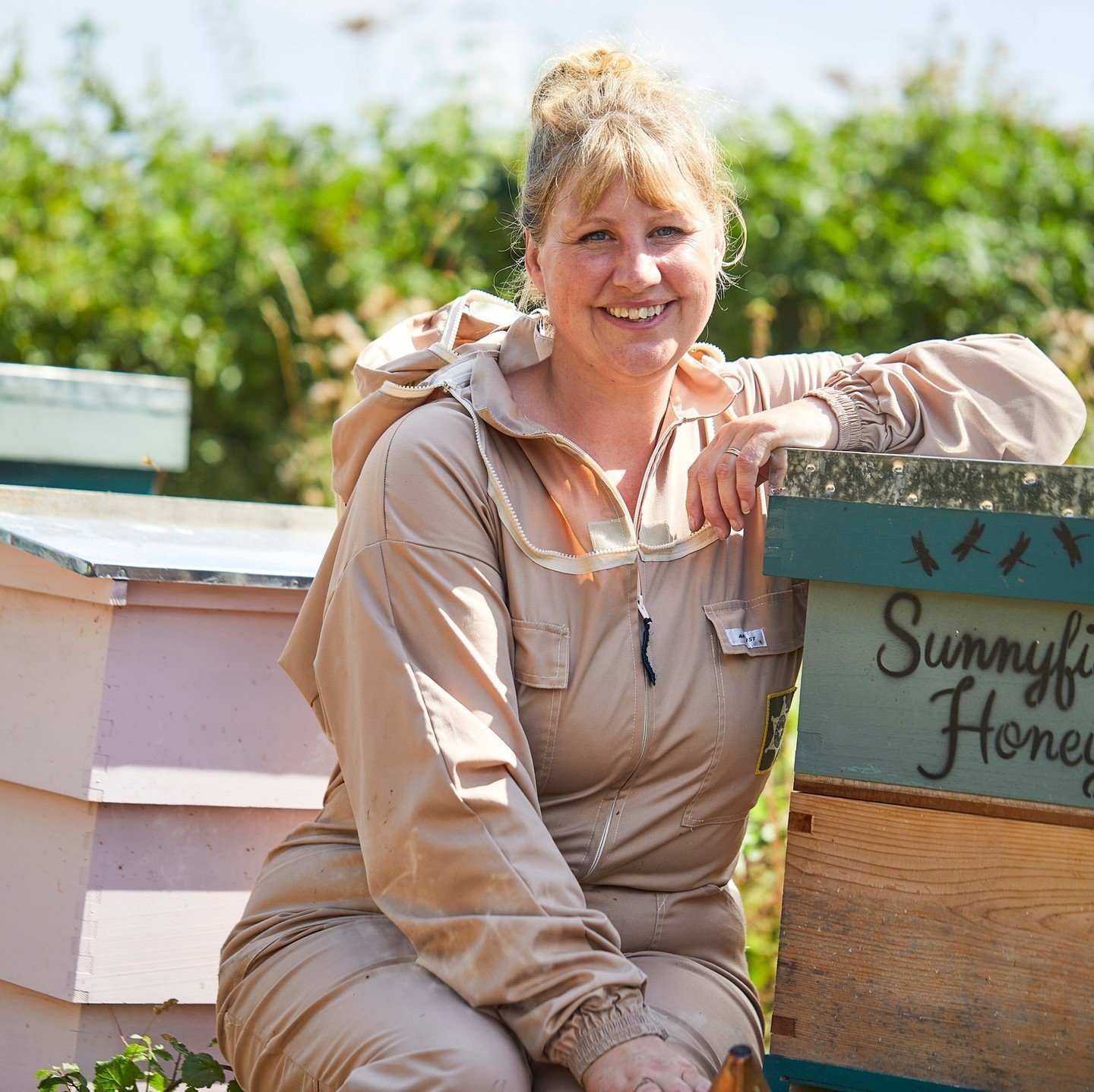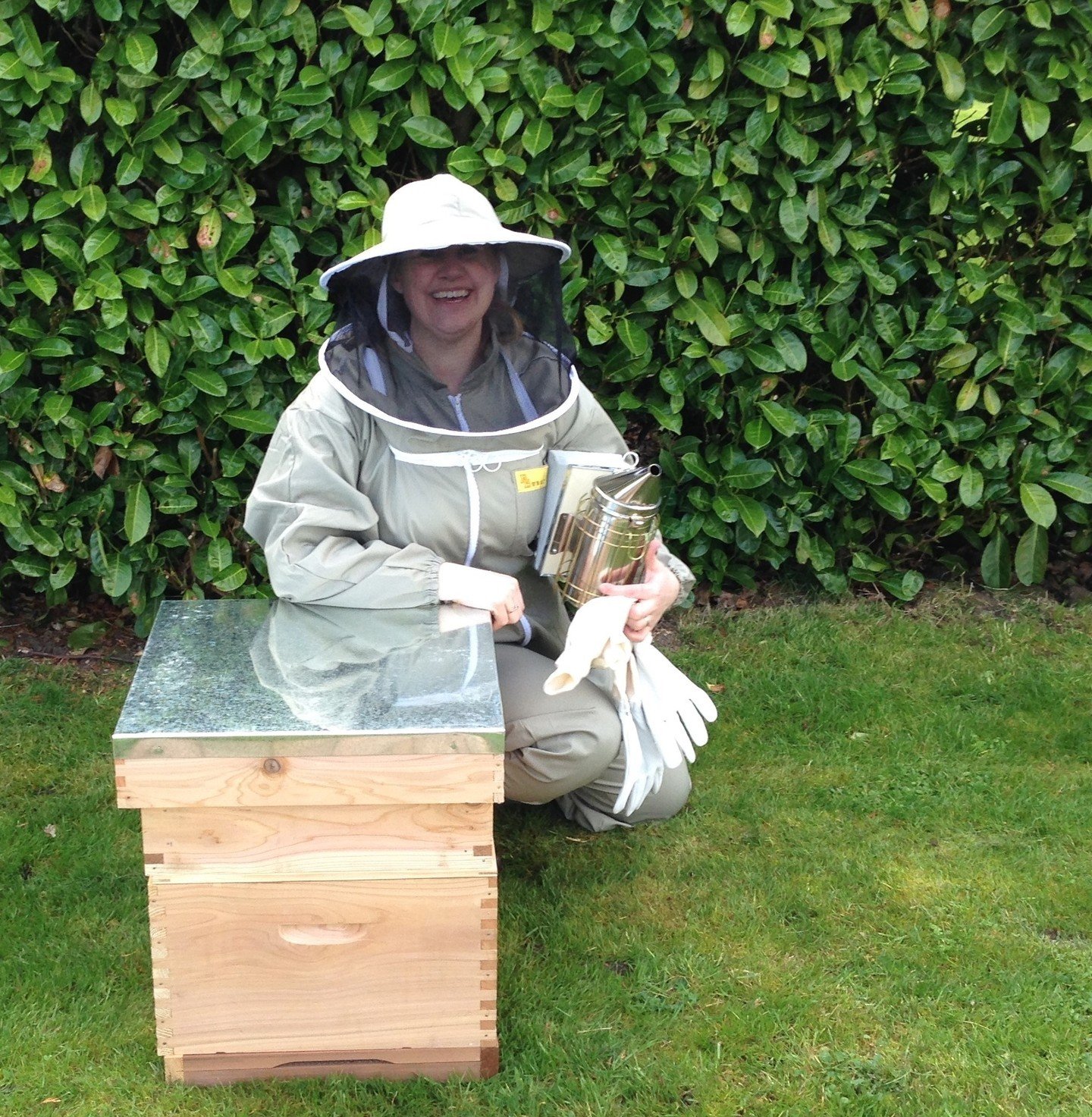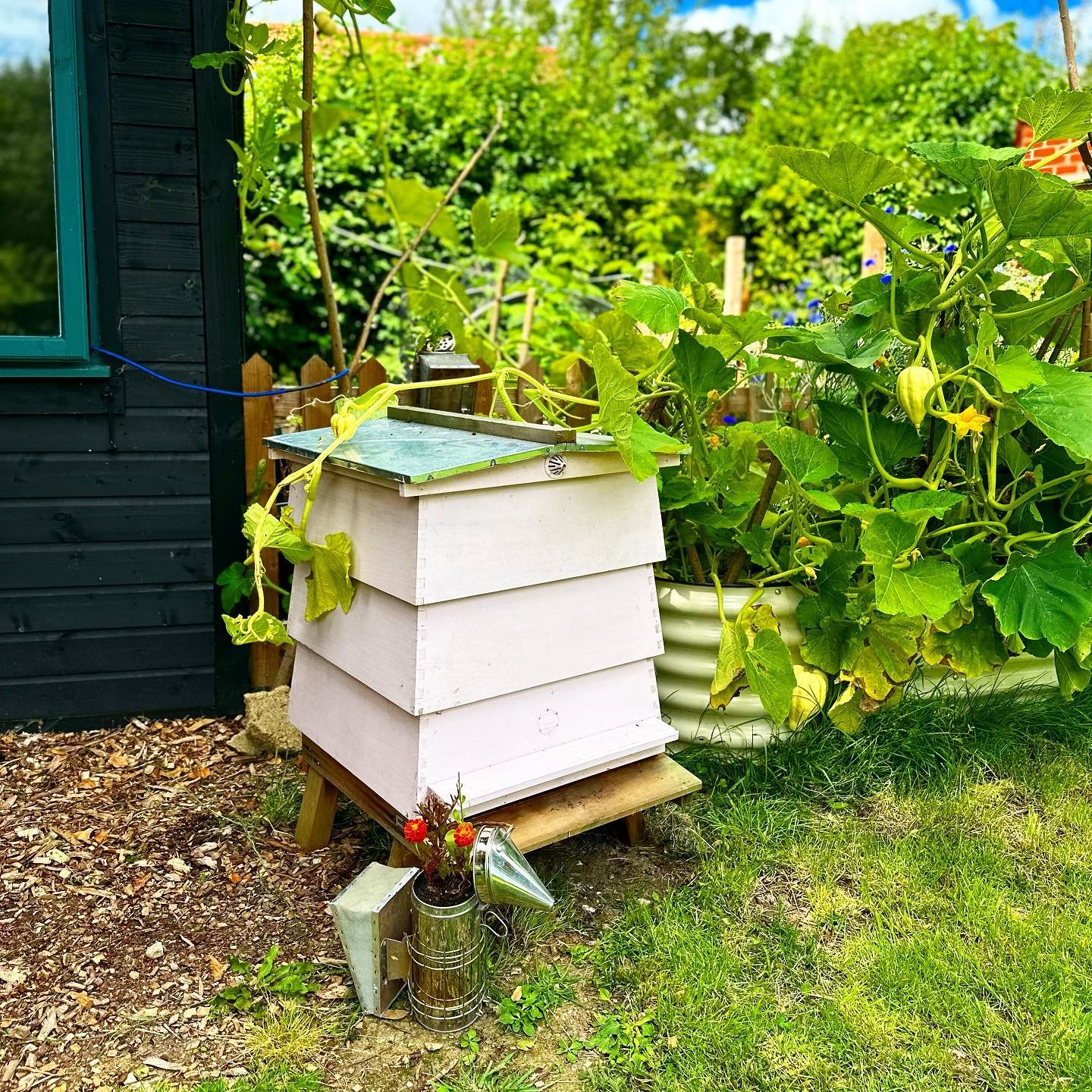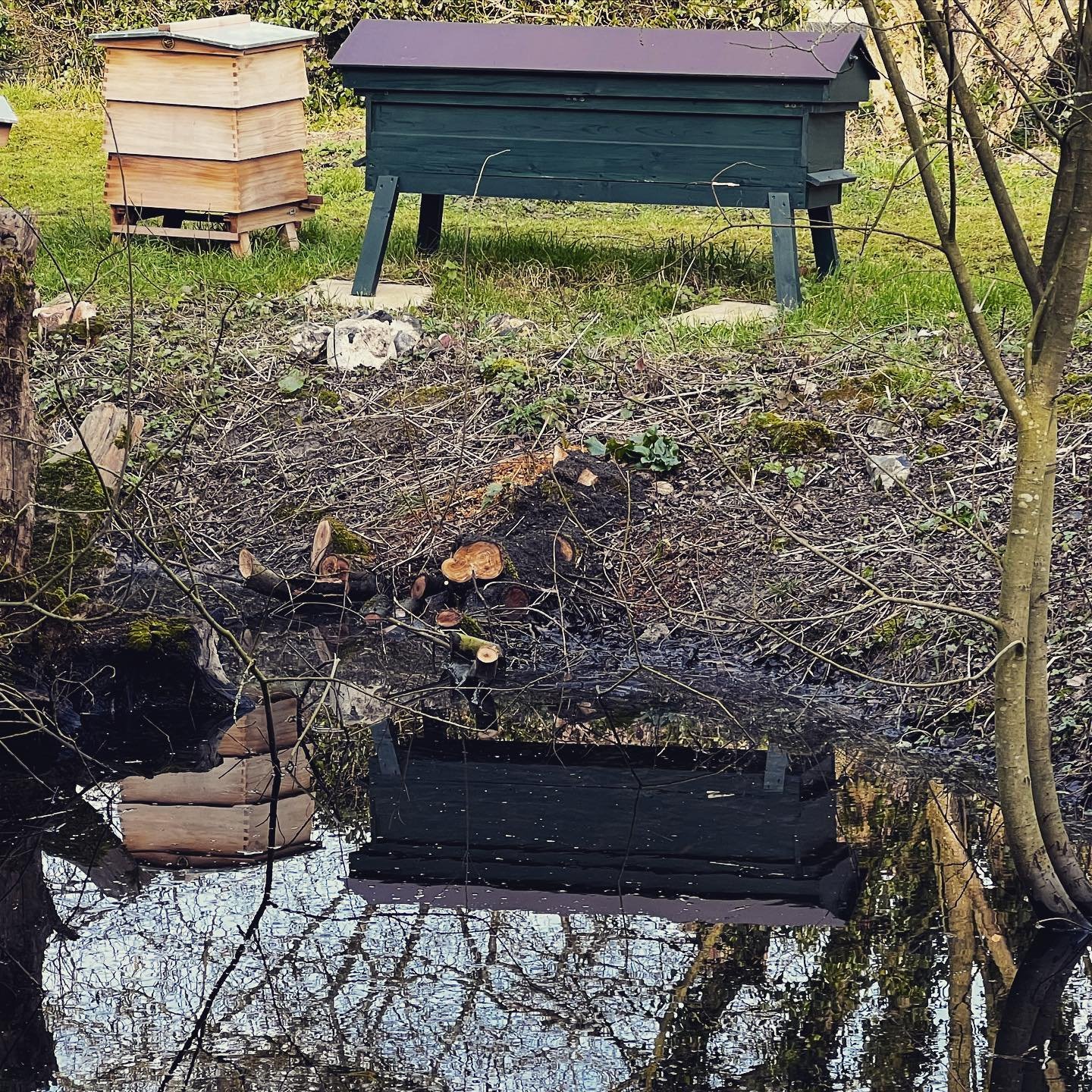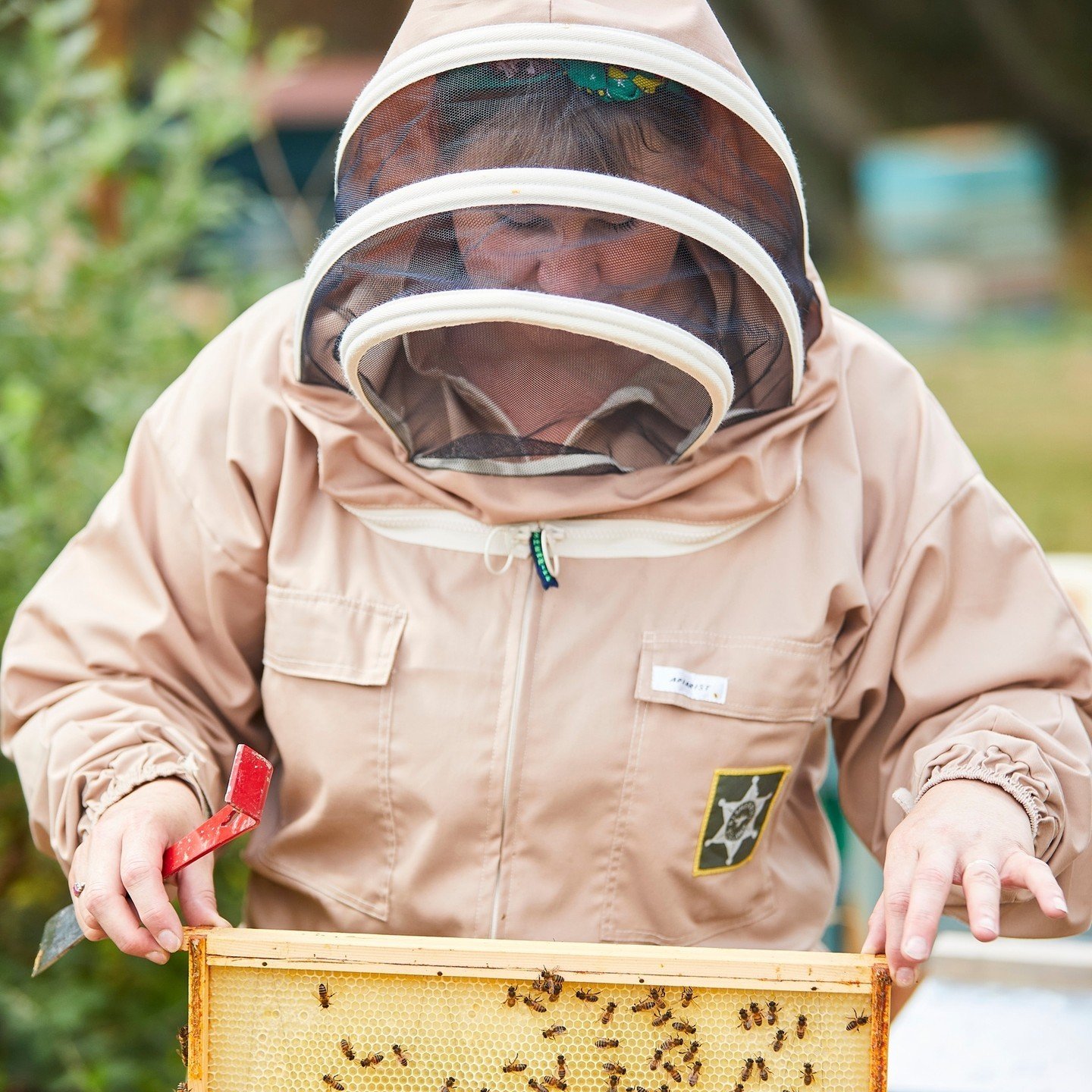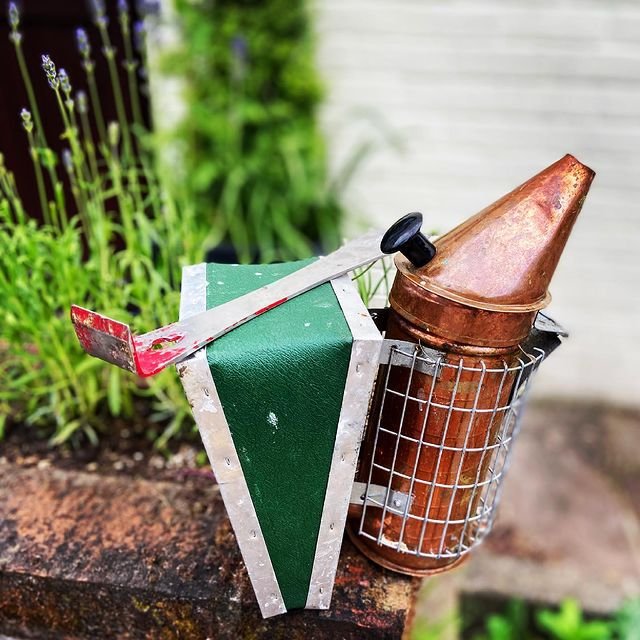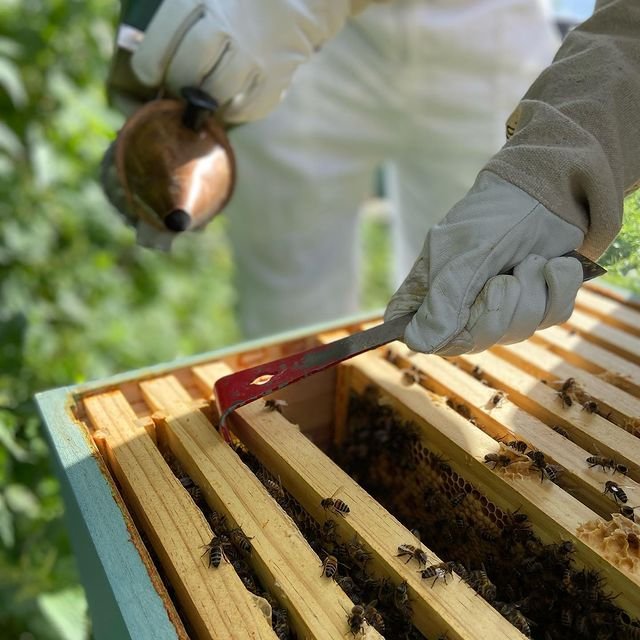Beekeeping Beginnings
I recently wrote a series of posts on my social pages about getting started in beekeeping, answering the most asked questions concerning becoming a beekeeper. After keeping bees for so long, I often forget there was a time before when I didn’t have this knowledge; when I didn’t really have a clue about honey bees and how they lived, let alone how to care for them and what would be involved.
When considering becoming a beekeeper, the first question I like to ask is “why”. If you want to become a beekeeper to Save the Bees then there are many, better, more cost effective and time effective ways to do this. Keeping honey bees is something done for the pleasure of spending time with the colony and helping them thrive, in a similar way to keeping chickens as both are considered livestock in the UK.
If you are still on track for getting a hive of bees then the next step is to work out where they will live, what equipment you need and where to get your bees. These were all questions asked and answered in the posts and now popped here in one handy space. For more detail on getting started with beekeeping I would recommend a course. If you’re not sure where to start I would advise my online beekeeping basics course; it’s ready when you are, accessed immediately after payment and should only take a few hours of your time.
How much space do I need?
This is a great question that is usually one of the first considerations. Whether you’re in an urban or rural area, your considerations are similar.
How do you use garden? Do you have children or dogs that play in it. Do you use every bit of it or is there an area that you leave alone.
How many hives do you plan to have… we’ll cover this one in a post later this week!
How close are your neighbours? Are you separated by a tall fence or are you able to chat to your neighbours over the garden fence?
My hives are in my garden which is used as a veg garden and for my chickens. I have two dogs but they don’t have access to this garden. I have two cats and they do roam through here, one of them has also been known to join us on a bee experience and I used to have a cat that liked sitting on the roof of the hives as it was warm!
The main point to note with these hives is where the entrance (or hive front door) is facing. In this case they are all facing outwards- towards the hedge and pond. This means the direction of flight is most likely away from my routes around the garden. The ones facing the hedge at the back will be forced up and over the hedge which is a consideration for those of you in more urban environments where the bees can be pushed up over the neighbouring gardens.
For me, I like to give my hives space. I don’t like being stung and if I’ve upset a colony (by accident) in the morning and then want to do some gardening, I don’t want to be chased around the veggie plants, so I like to give at least three or four metres space behind and to the side of the hives and an obstruction about a metre in front that pushes them up.
People often have hives on allotments and in those cases they are usually fenced off with panels or netting, which again forces the honey bees up.
What if you don’t have room for a hive in your garden.
Either we don’t have a big enough garden or we use all of the space with activities already, or we’re concerned about our neighbours. Can we still keep bees? The answer is yes. If you would still like to become a beekeeper there are options.
If you join a local beekeeping group sometimes they have a division apiary (apiary is the name for the place where beehives congregate!) where you can put a hive or few. Another option is to pop one on an allotment if your allotment rules allow. Perhaps you know someone else that wants to keep bees that does have the space so you could buddy up and start together? Or is there a land owner nearby that would be willing to provide you with some space.
My first hives were on a patch of farmland; I contacted the landowner and explained that I was looking to place a couple of hives and did they have any land available. I ended up with three apiaries on his land. All corners of fields. Later I answered a request by someone that had offered space, via the beekeeping association, on their land for some hives. This ended up being one of my most favourite apiaries before we moved, and one I really miss.
If you don’t know your land owner you can look on the British Beekeeping Association (BBKA) website as they have an “offer land to bees” section which advertises people with land looking for beekeepers.
Payment for a hive on land is traditionally 1lb or one jar of honey per have per year.
Other considerations when locating your hive.
The next questions to ask are getting more into the specifics of choosing the location:
What’s the access like- can you get to the hives without completing an obstacle course. You want access to be easy, this is particularly relevant when you are moving hives or adding/ taking off honey boxes as you need to at least be able to walk safely and ideally get a trolley (or vehicle if it’s and ‘out-apiary’ so not in your garden) close to the hives.
How is the site affected by the weather- does it flood, is it windy, is it in full sun, are there lots of trees creating shade… ideally you want a site where the hive is safe from weather disruption, particularly around the entrance which is towards the base of the hive, and if possible a little afternoon shade is nice as it’s comfortable for the beekeeper!
I also like to perform a bee audit before placing hives to make sure we’re not introducing too many bees into an area sparse of food for the species that may already be there.
Hives
Hive choice can be one of the simplest decisions to make, but also most confusing!
The second image is me with my first hive, just built and on it's first outing into the garden before the bees arrived.... look at that happy face! I had opted for a Commercial Brood Box and National Super, as these were what were regularly used by the members of the beekeeping association I had joined and were most familiar.
The Brood Box is the bigger box at the bottom, this is essentially the honey bee's home, it's where they will live year round and is a specifically measured box containing frames that the bees build honey comb on.
The Super is the honey box; multiples of these are added to the hive, on top of the Brood Box, throughout the summer and it essentially works as a pantry for the bees to store their honey. They can produce up to three times more honey than they consume and so need lots of room to store it.
These stacked box style hives are probably the most popular style in the UK and I believe the National and possibly Langstroth hives are top of the favourites list for most beekeepers. They will all consist of the same named components but have differing dimensions, just to add to the beginner overwhelm of choices!
The third image is of a WBC hive - this is a style of hive that's popular for it's aesthetics and inside is a boxed system like the second image. The fourth image is an example of a hybrid long hive which uses frames along the body, almost like a lying down log, rather than stacking.
These are just a few examples of hives to choose from (there are many more I haven't mentioned)! But which one should you choose...
Choosing the right beehive for you is a very personal choice but one which will likely be influenced by a few factors:
Will you be buddying up with another beekeeper, if so choose the same hive style as this will make sharing equipment easier.
Is the hive aesthetic important to you? You can get hives in wood or plastic / poly and they can be left natural or painted colours. You could choose a WBC for the quintessential English country garden vibe, or just buy a sloped rather than flat roof (you can also buy copper topped roofs for the ultimate bling!)
What's your budget; more popular and simpler hive styles are going to be more affordable than more complex. If you're ok doing some diy work then you can buy flat packed rather than pre-built.
Are you physically able to lift the honey boxes from the hives and back on? In the height of summer you could be lifting multiple boxes of honey that weigh around 30lbs if you go for a stacked box hive style. If you're less able then consider the long hive style.
What sort of beekeeper do you want to be; there are hives for all sorts of beekeeper and we can cover the type of beekeeper later but if you want to be more hands off then you could consider a Top Bar hive or a Warre Hive, even a log hive.
Personally I like the Commercial hive because of it's large frames so you can sustain a fairly large colony pretty nicely but less and less places are selling this size now, I also like the National as the frames are a little easier to handle but the colony requires a little more attention and quicker response to providing space. I didn't get on with my WBC hive because it's too low to the ground so required a lot of bending over to inspect the brood box (I'm 5'8" for reference, I also suffer from back weakness so the bending didn't help!). I will be getting some Langstroth hives this year so I can be informed about those. I also quite like the hybrid long hives for ease but I nicknamed mine 'the coffin' so the aesthetic isn't great with the one I currently have.
Every beekeeper you talk to will have their own (often strong) opinion; but it is important you find the right hive for you and then stick to that one type... unless you start teaching and then you can get in a muddle with all the slightly different components like I do!!
How many hives should I have?
Beekeepers don't often agree on things but in this case there is a general coconscious that you should try to have at least two hives (of the same style). There is good reason for this.
My first two colonies were swarms, I received them nice and early in the season (May and first week of June) and so got to spend plenty of time with them to observe both colonies every week. This is a really key part of beginning beekeeping, in my opinion, as it helps you learn what's an environmental influence on your colonies and what is the colony's own temperament.
I'm aware I may have just jumped ahead - yes, bees can have (and change) their own temperament. Even with ten hives in an apiary I can distinguish between each colony and talk to you about it's little quirks - one might be really loud but calm, another might not like it when I first open up but goes calm after a few seconds, the one next to it may be the opposite and be fine when I first open but only gives me a certain length of time before they have had enough. Some like to watch me, some just ignore me. A colony may be quiet or it may be stroppy!
Knowing a colony's temperament helps me understand what's going on inside the hive - if their temperament has changed from one inspection to the next then there will likely be a reason and if I can work out the reason I become a better guardian for them as I can provide assistance or intervention if necessary or deemed appropriate. So having two hives side by side and comparing them to each other as well as to the previous inspection can be helpful.
It can also be helpful if you need to share resources or equipment between the two hives rather than trying to find a nearby beekeeper to assist.
Ps. just because two is the recommended I warn you that it's an obsession and can easily escalate!
The equipment you might need.
So you've decided on a hive and where it's going to live, now you need a few more items to form your basic beekeeping kit. These would be deemed the essentials.
Hive Tool. This is the little metal tool you can see in the pictures with the red end. It's used to help manipulate the frames inside the hive, usually because the bees use a substance called propolis to stick everything together and so the hive tool can create leverage to gently move the frames apart, ready to inspect.
Smoker. A traditional tool (the copper coloured thing in the photos). It's filled with dry natural materials which are burnt to create a cool smoke, the smoke can be directed at the bees to either move them or to cover their alarm pheromone and so keep them calmer so you can go about your inspection.
PPE. I choose to wear an all in one beekeeping suit, gloves and boots so that whilst I'm inspecting the bees I'm not distracted by them landing on me. For me this is particularly important around my face as I am mildly allergic to their venom and so tend to swell a little when stung (why I chose this career sometimes I do wonder!!). You can now get suits which claim to be sting proof but I haven't tried any myself so couldn't say. I have inspected hives without gloves which I enjoy because it makes you extra careful, but your hands get rather sticky and it's also not a good idea re hygiene between hives.
Previously in our 'Getting Started in Beekeeping" series we started to look at the equipment you might need.
This is where personal choice, budget and beekeeper styles starts to creep in and if you look through the beekeeping supplier catalogues the list is endless with things you will need and should try.... and then you end up with a shed bursting full of bits and bobs that you used once or not at all!
So I thought rather than go into the extensive list of equipment you might need, let's talk about costs to get started and to purchase the basic equipment.
If you have a look at most beekeeping supplier websites they have a section with "starter kits", these kits will contain a hive and the essential equipment for getting you going; smoker and hive tool. Sometimes they include a brush which you will carry around for a while and eventually will find a use for, some sets also contain a basic beekeeping suit and a book. The more extensive sets will also include a feeder which is used to top up your bees with sugar syrup to give them a head start before they start foraging.
A quick peruse of the British beekeeping suppliers (Jan 2024) and for a new starter kit like the above, with one hive, you're looking at prices from £600+. You can shop around and buy things individually or second hand and refurbished which can sometimes bring the cost down.
As you progress through the year you will find you might need other things, particularly if you have honey to extract, but if money is tight sometimes you can share with another beekeeper or beekeeping groups often have equipment you can borrow.
Getting your bees.
After completing my training, buying and building my equipment and getting it all set up ready, the next thing was getting the bees so I officially could become a beekeeper. As money was tight I decided to go down the waiting for a swarm route; this meant adding my name to the swarm collection list held by my local beekeeper association and hoping I would get the call.
The risk of waiting for a swarm is that you don't know if you'll get any bees at all, if you do you don't know their health or history and you also don't know if the queen will be a good one or if you will immediately be faced with a re-queen situation, which as a beginner can be daunting. I was fortunate enough that I received my call in the May so had my first colony set up and thriving by mid-summer.
If you can afford to then I recommend going down the nuc route. A nuc or nucleus is a colony of bees within a small hive that's usually half the size of a standard hive. This small hive is called a nuc. Prices for nuc's vary and seem to be around £200-£300 at the moment. The benefit of a nuc is that it is an already established colony, either overwintered or created in the spring. The nuc will arrive with all stages of life and some food stores too so you then move the full frames into your hive, perhaps give them some food to get them building their new frames out, and then watch them grow and flourish!
For beginners I don't recommend buying full colonies of bees as this can be rather overwhelming and it's more likely mistakes will be made than when you grow and learn with your colony.
I hope you enjoyed the series on getting started in beekeeping.
It's worth considering; if your thinking about becoming a beekeeper; is beekeeping right for your and why do you want to keep bees?
There are around 270 species of bee in the UK, around 20,000 species across the world. Beekeepers just look after the honey bee (of which there is just 1 species in the UK!) so if you're interested in beekeeping because you want to 'save the bees then there might be other things you could do that will make a much bigger impact.
When I run my bee experiences I want you to start to see the world around you from the bee's point of view. We humans like to think we're the be-all and end-all (excuse the pun) but just because we see the world a certain way, doesn't mean that's the same for all living creatures. During a bee experience you can gain an insight into how a bee sees, how far they fly, how they decide where to land and what happens within their hive to allow them to survive.
Have a happy day and thanks for reading.


